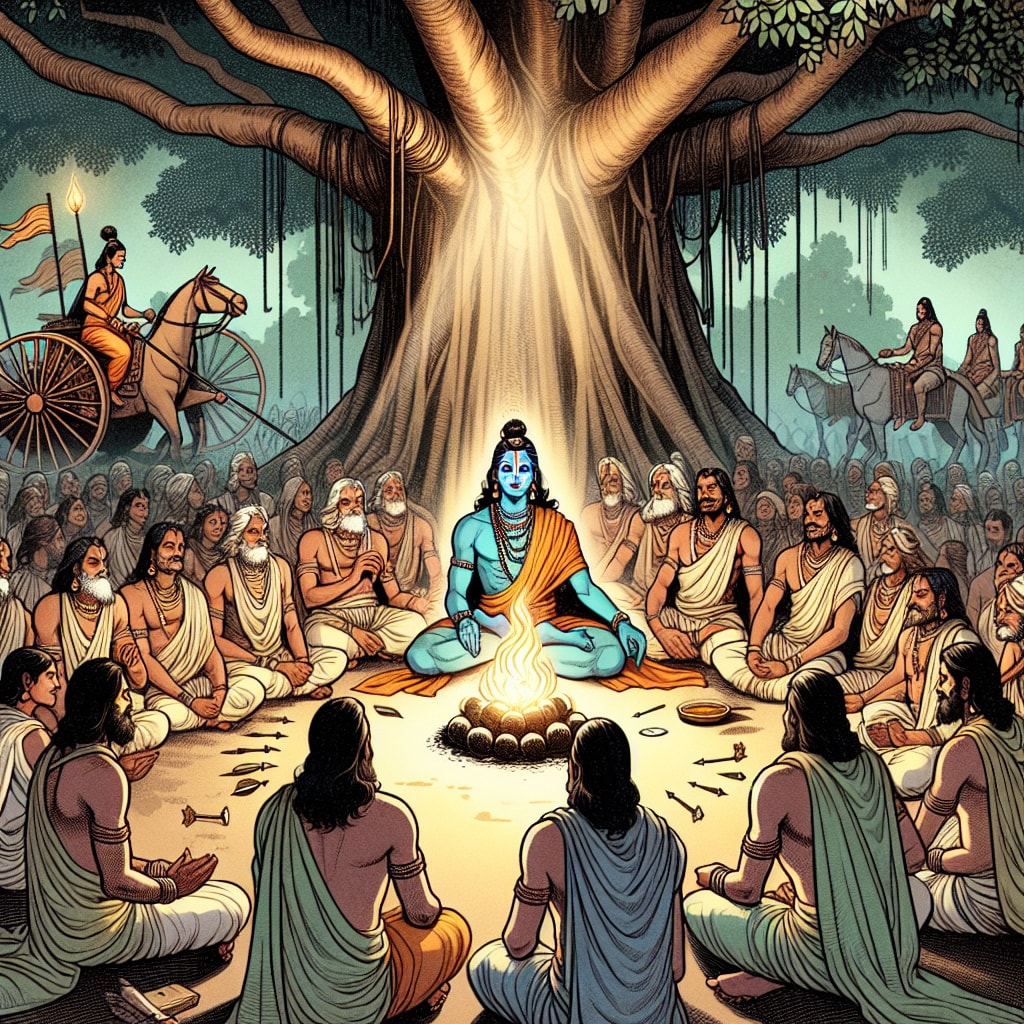The concept of "Vedic religion" that permeates the Mahabharata, the Bhagavad Gita, and other Sanskrit literature refers to an encompassing worldview distinguished by the rituals, practices, and belief systems of the early Indian subcontinent. The Vedic religion forms the basis of Hinduism and is rooted in the Vedas, the ancient religious texts of India composed in Sanskrit.
The characteristics of the Vedic religion, as highlighted in the Mahabharata and the Bhagavad Gita, revolve around a pantheon of deities personifying natural and universal elements like fire (Agni), wind (Vayu), and sun (Surya). These deities were propitiated with elaborate rituals involving hymns, mantras, and offerings, seeking earthly prosperity and cosmic balance.
Moreover, the Vedic religion encompasses the concept of Dharma (duty or righteousness), Karma (action and its consequences), and Samsara (rebirth). The Bhagavad Gita in particular discusses these concepts in detail through the conversation between Prince Arjuna and Lord Krishna.
The Sanskrit literature encapsulates the essence of the Vedic religion, offering insights into life, ethics, morality, and duty. For example, the Bhagavad Gita explains that everyone must perform their duties without attachment to the results—an important principle of Karma Yoga.
It's also crucial to note the inherent flexibility and open-endedness of the Vedic religion. There is latitude for interpretations, which has allowed for the evolution of various philosophical schools, yet maintains its core tenant - spiritual liberation (Moksha).
To summarize, the concept of the Vedic religion, as gleaned from the Mahabharata, Bhagavad Gita, and Sanskrit literature, reflects a complex dynamic of ritual practices, morality, duty, and spirituality, underpinning the evolution of Hindu thought and Indian culture.

